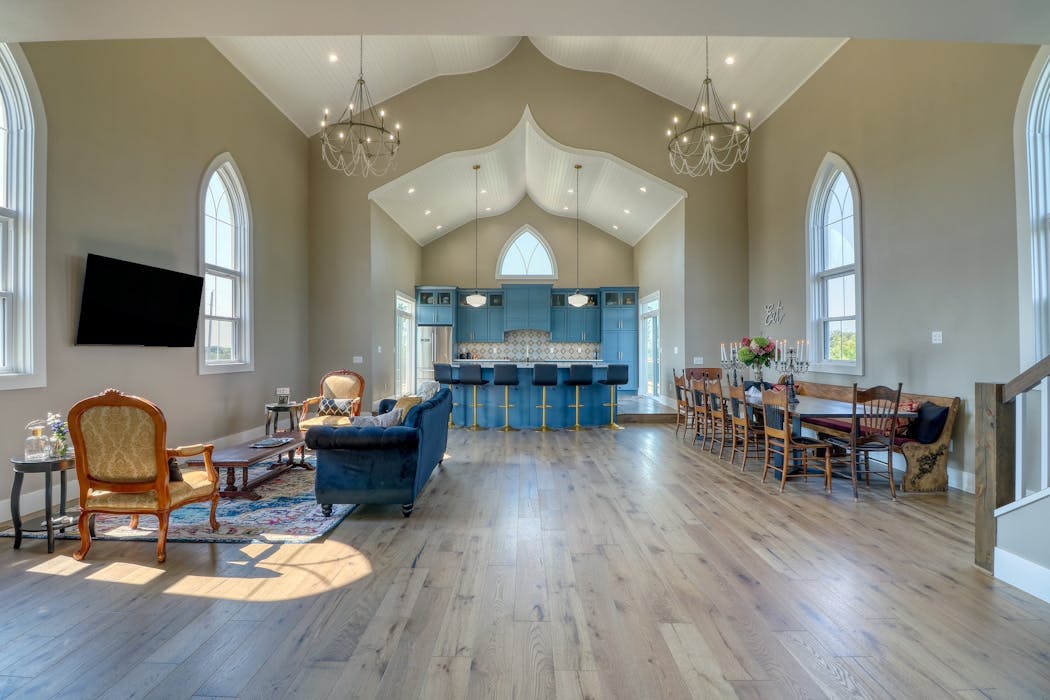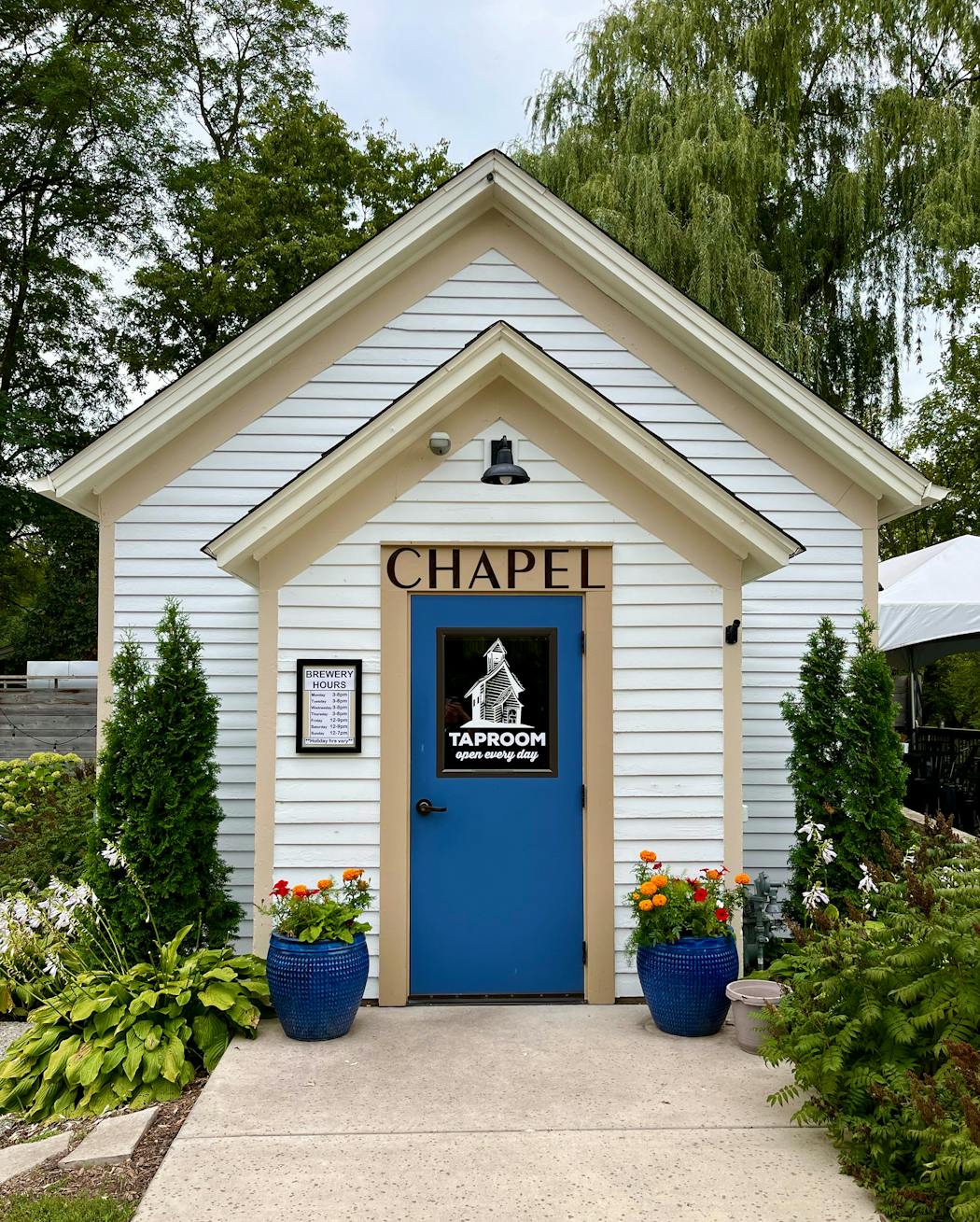O'Mara Dunnigan wasn't looking for herself. She was browsing through commercial property listings for a client. But when the Detroit Lakes real estate agent saw the century-old church that she had long admired from afar, she sent the listing to her husband with a note: "I want it."
After just over a year of renovations — including redoing the scalloped ceiling and rebuilding the soaring 65-foot steeple — the church was reborn as Chapel House, an event center and overnight rental with three bedrooms and a massive kitchen island at the front of the nave.
While population shifts have led to church buildings being abandoned for decades, especially in rural areas, the pace has quickened in recent years as congregations across Minnesota and the U.S. age, shrink and close. In 2021, Lifeway Research looked at 2019 data from nearly three dozen Protestant denominations and found that 4,500 churches closed across the country. The pandemic has only accelerated this slide.
Often priced to sell, some of these empty churches are being picked up by creative buyers who convert them to living spaces. Viral Tik Tok videos documenting #churchintohome renovations and the resulting #dreamhome reveals are getting nearly half a million likes — providing inspiration and boosting the confidence of more would-be buyers.
Minnesotans are among those giving second lives to these often historic spaces. But instead of just remaking them into single-family homes, a few of the latest reimagined church buildings include a brewery along the Cannon River and a restaurant in Perham, Minn.
A spectacular setting
After she bought the Detroit Lakes church, Dunnigan researched its history. She learned that it was originally called the Saron Norwegian Lutheran Church. Dedicated in 1909, it offered services in Norwegian, then English.
By 1960, Dunnigan learned, the congregation had shrunk and the church was closed. It sat abandoned for more than two decades.
In the 1980s, a family bought the church, moved it about a mile down the road to their farm and repaired its roof, steeple and windows. It was moved again in 2000 and became a nondenominational church called Chapel on the Hill, with services on Sundays during the summer months. When the Dunnigans bought it in 2021, it had no insulation, no heating or air conditioning, and a failing septic system.
That didn't deter them.
"When we walked in, we said 'OK, this is worth saving,' " Dunnigan said. "The scalloped ceiling, it's 24 feet high and it's a unique shape — so that certainly stood out. The setting itself is absolutely stunning. It's up on a hill and it overlooks the countryside and the golf course to the north. It's only five minutes out of town, but you can see it for about five miles when you're driving. It really just stands out and it's beautiful. The steeple, I mean, you can't miss it. It's pretty spectacular."
More than 200 people attended the September open house for Chapel House, many of whom told Dunnigan, "We're so glad that somebody took on this project and saved it."
A gathering place
Tracie Vranich's small-batch brewery didn't have a name in 2015 when she and her co-owners were hunting for a place to start their business. The building they found by the Cannon River in Dundas ended up providing one: Chapel Brewing.
Before it became their taproom, the space went through many transformations, Vranich learned from its most recent owner, a photographer who used it as a studio and had compiled newspaper clippings about its past.
It was first built after a traveling evangelist from the Plymouth Brethren converted a prominent Dundas farmer and store owner named J.P. Hummel (a German immigrant and onetime Lutheran) to the faith, Vranich said. Hummel called it Gospel Hall and ran a Sunday school there until he died in the 1930s.
"He built this place where we have our brewery now in 1880 as a place to gather," she said,
After Hummel died, the township bought the building and turned it into a town hall and polling place. That's what it was until the 1990s, when the photographer bought it, Vranich said.
When the brewery owners renovated the space, they wanted to showcase the building's history without making it look too religious. They hung salvaged pendant lights and installed new handcarved pillars at the bar. Recently, they painted the exterior in its original white.
"Now, we are in this intimate, warm and inviting space and we're inviting people to come and commune with beer, with their fellow beer congregants, with nature," Vranich said. "Here we are all these years later, basically, following J.P. Hummel's dream and his footprints. We're doing it."
Made for micro-weddings
Some churches are beyond repair. But that doesn't mean they can't be reborn in a different way. One Cambridge couple repurposed the altar, pulpit, baptismal and stained glass windows from a decrepit Norwegian Lutheran church and built their own tiny chapel on their land.
Stacy Smith showed the carpenters whom she hired photos from Pinterest to help them design the structure. She and her husband now rent it out for micro-weddings that include 16 or fewer people. They call the chapel Angels of the Prairie. (Because it's on their property, visits must be set up in advance.)
From a book about the church, which was originally in North Dakota, Smith learned that the altar they saved was the work of a Norwegian immigrant named Arne Berger, who painted portraits and altars across the Midwest from 1893 into the 1930s. This summer, two of Berger's granddaughters came to see the altar in its new home.
Smith and her husband are enamored of their tiny chapel.
"We renewed our 10-year vows here," said Smith. "It was like a gift."




